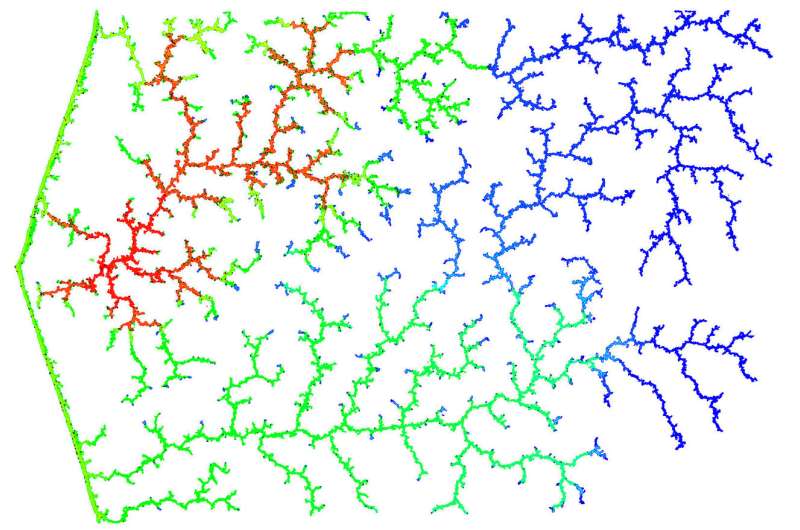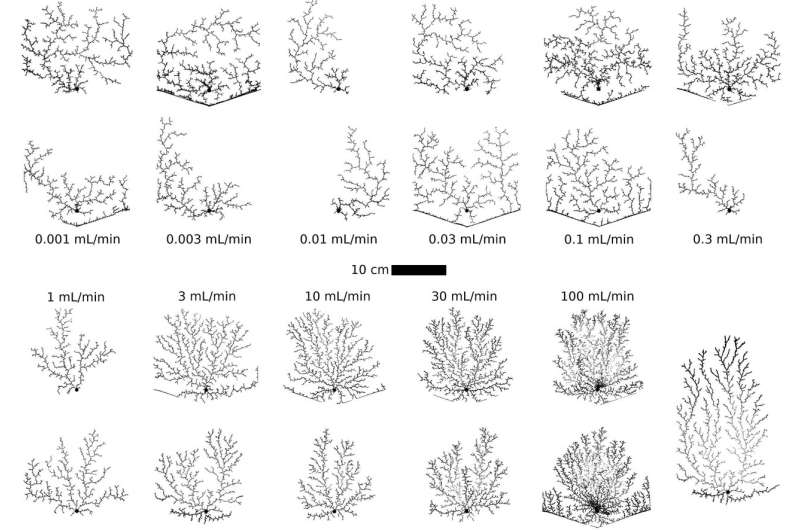Research helps break ground to clean up land

Researchers at Swansea University's Complex Flow Lab have been exploring the intricate shapes that emerge when air is injected into soil. Published in Physical Review Applied, these findings could one day be used to speed up the decontamination of industrial brownfield sites—which the United Kingdom currently has over 400,000 hectares of.
The experiments are deceptively simple, with compressed air being injected into narrow glass cells which are tightly packed with sand and saturated with water. Not as straightforward however, are the spectacularly complex structures that appear. As the air cracks the wet sand open, a pattern forms reminiscent of tree branches against a winter sky or the network of blood vessels in the body.
Complex Flow Lab lead and Associate Professor at Swansea University's College of Engineering, Dr. Bjornar Sandnes, said: "It is surprising to see that widely different systems can produce patterns that look eerily similar. Often this is because, deep under the surface, they share some mathematical guiding principle."
Complex patterns aside, the principle that governs the formation of the fracture branches turns out to be surprisingly simple.
Dr. James M. Campbell, Postdoctoral Researcher at Swansea University throughout the project, explains: "The air-filled fractures take the path of least resistance and they push material aside as they move forward. This creates a denser region around the fracture that acts like a shield, keeping other fractures at arm's length."

Dr. Bjornar Sandnes, said: "We study these patterns first and foremost because we are curious to discover what physical mechanisms shape the form and function of these beautiful structures, but also because these processes are important in many natural and industrial systems".
One example of this would be when a soil is contaminated and needs cleaning up. In-Situ Chemical Oxidation (ISCO) is a technique where the soil is flooded with a chemical that reacts with the pollutant, and renders it harmless. The problem with ISCO is it takes such a very long time because flows in soils are so slow. By fracturing the soil, high-conductivity pathways can be generated for fluid exchange, speeding up the cleaning process, and reducing cost for the operator.
More information: James M. Campbell et al, Gas-Driven Fracturing of Saturated Granular Media, Physical Review Applied (2018). DOI: 10.1103/PhysRevApplied.8.064029
Provided by Swansea University




















